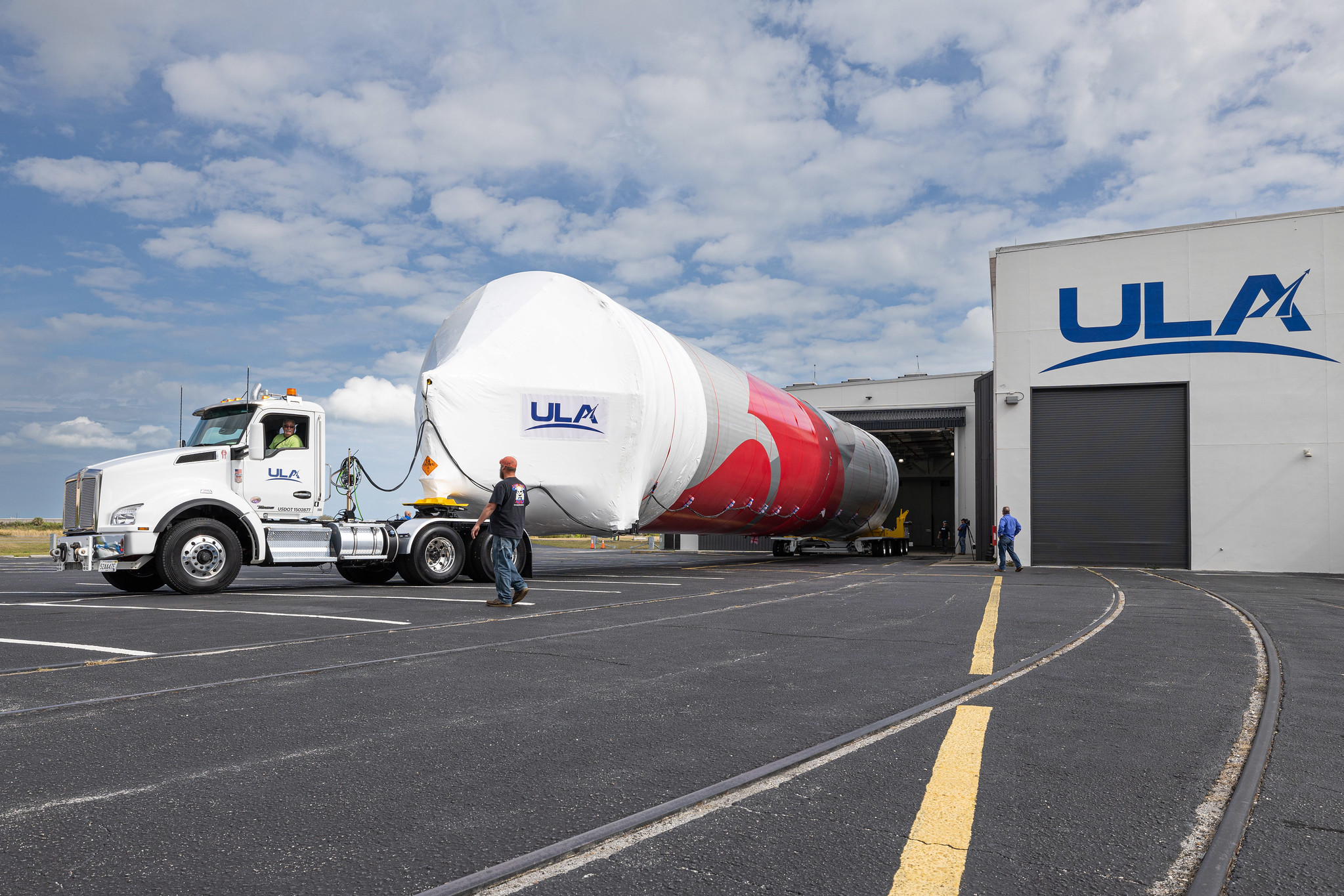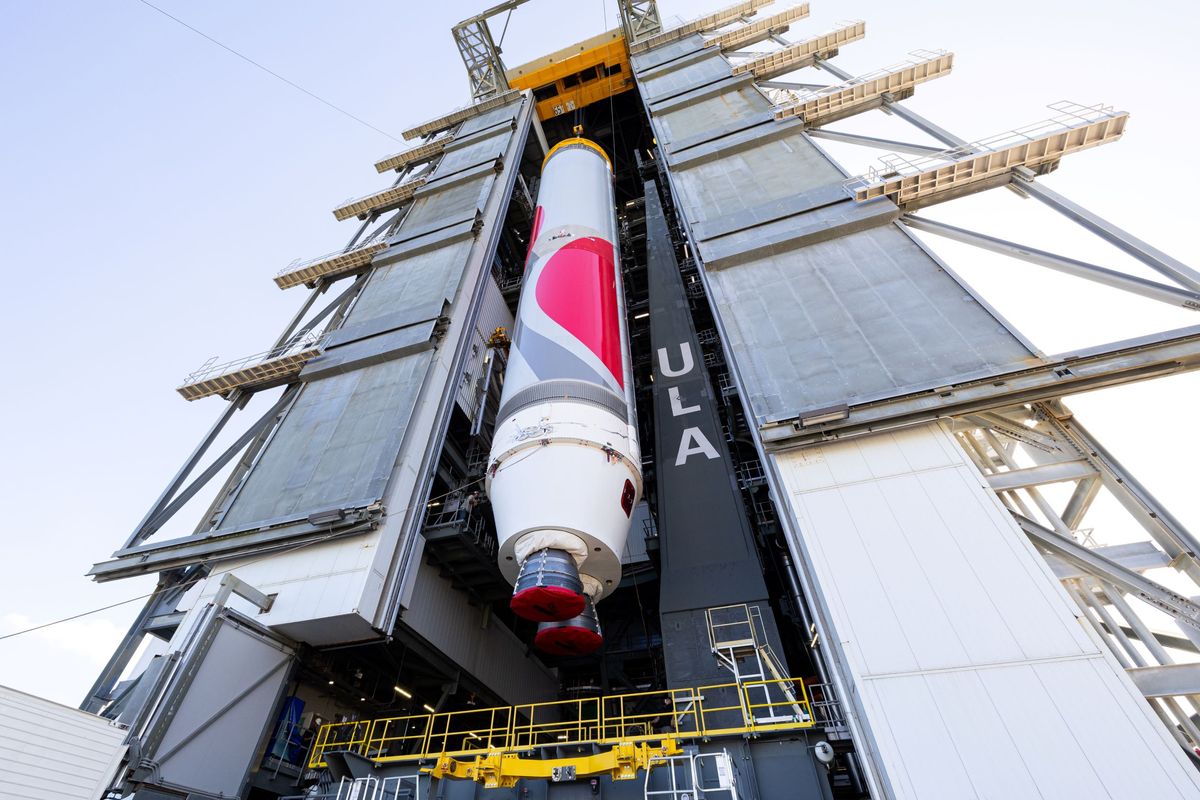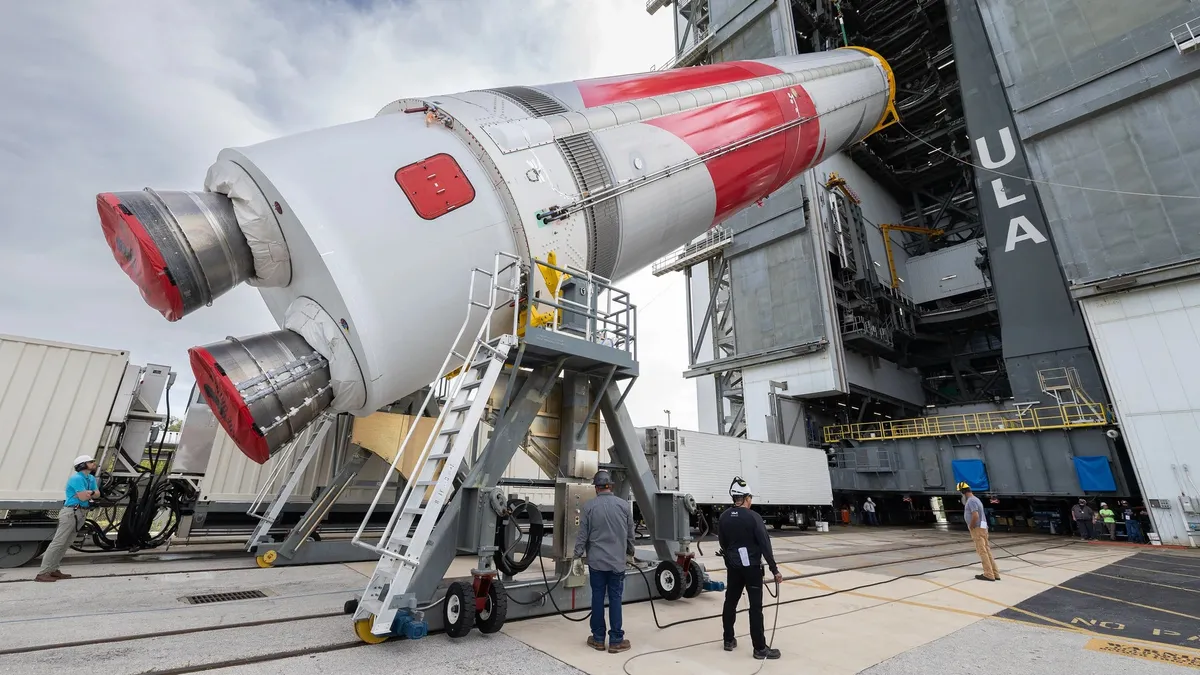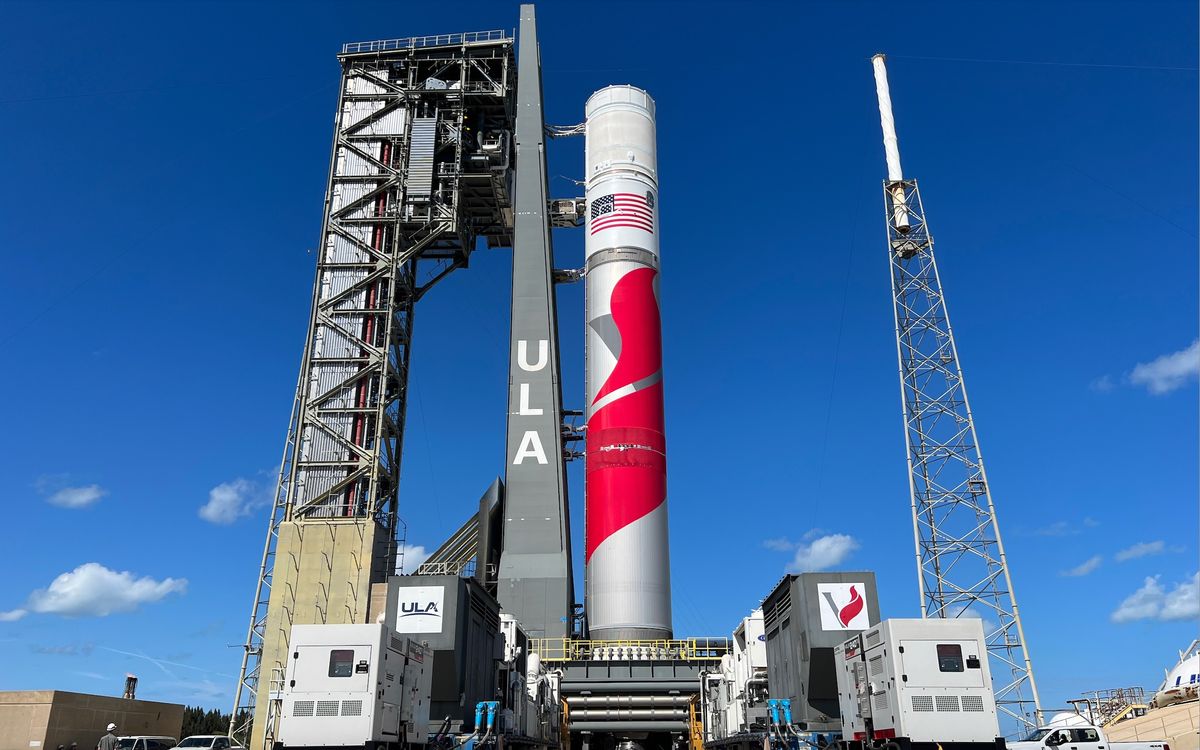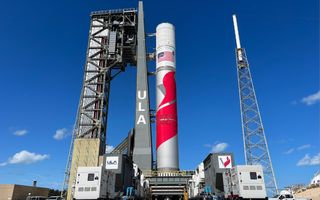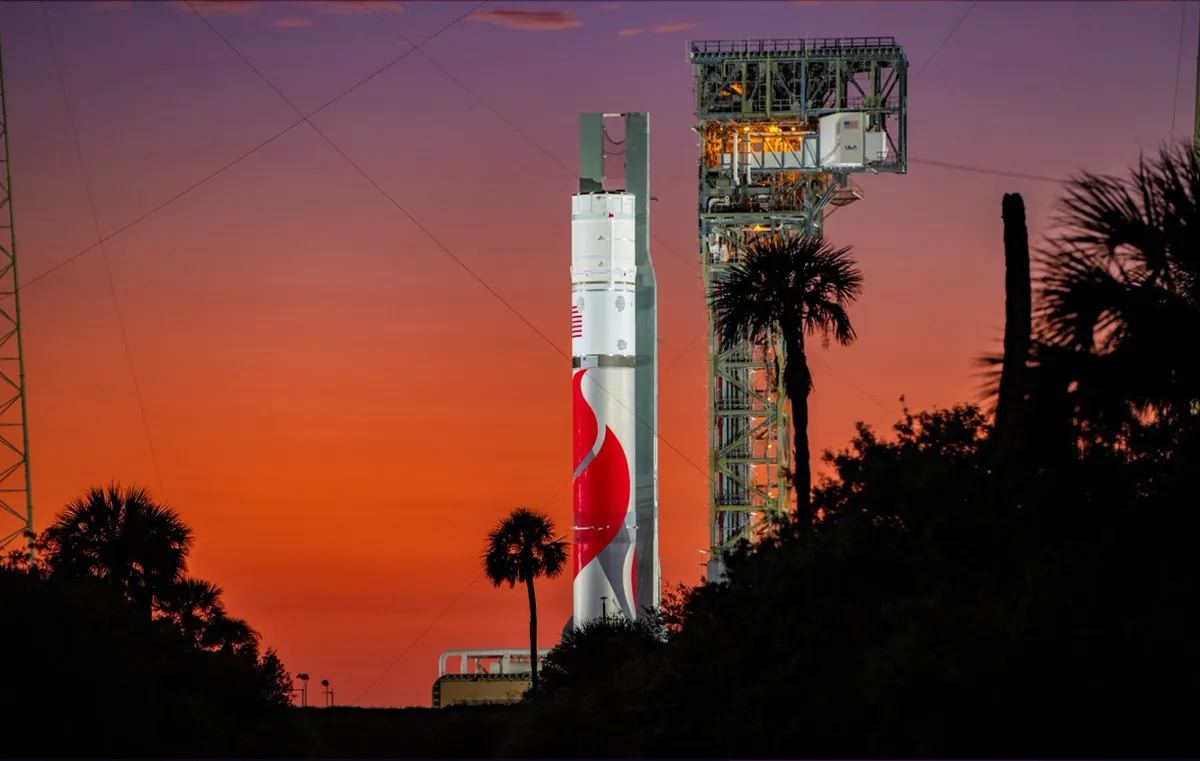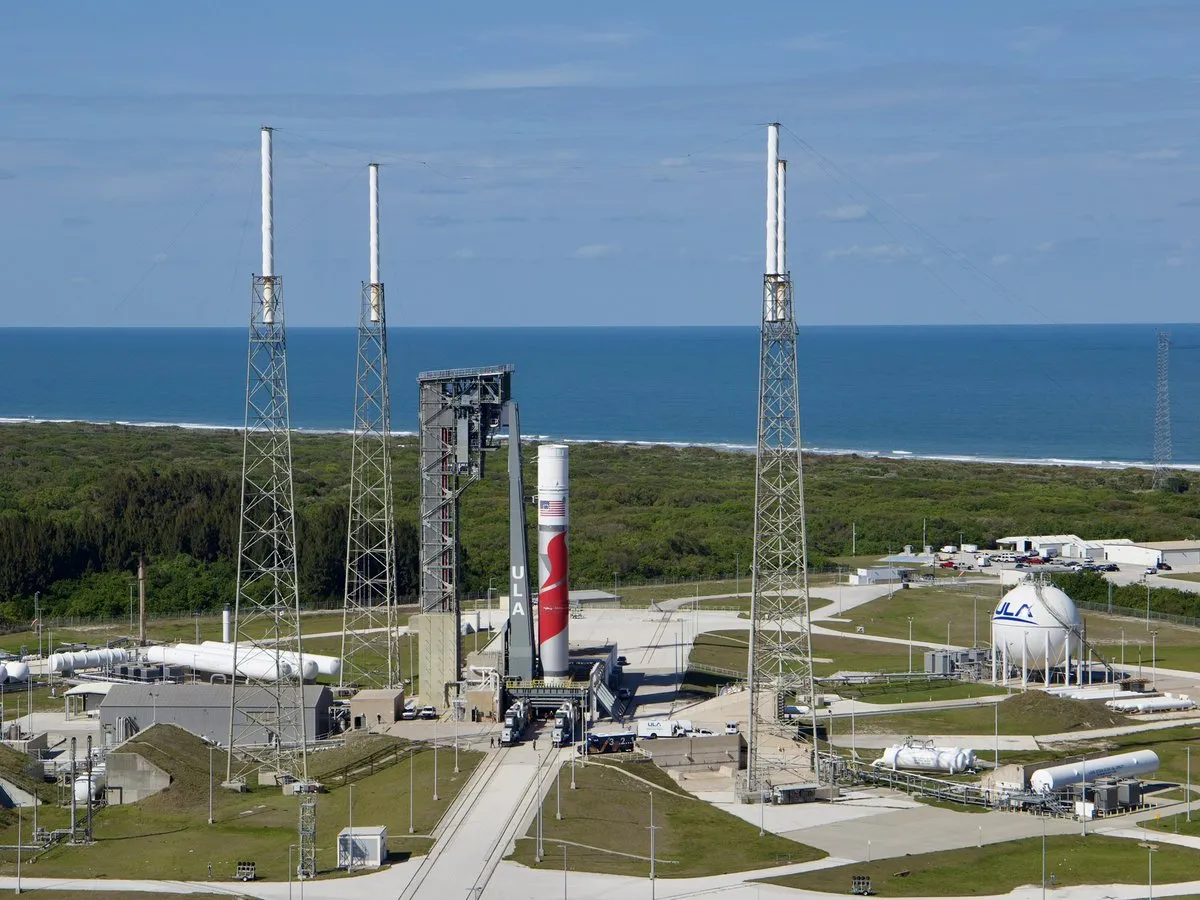Hamartia Antidote
ELITE MEMBER

- Joined
- Nov 17, 2013
- Messages
- 35,188
- Reaction score
- 30
- Country
- Location
The debut of the mighty BE-4 is not far away.

 news.yahoo.com
news.yahoo.com
Jan. 11—Eight years in development, the first Vulcan Centaur rocket left United Launch Alliance's Decatur factory Tuesday morning to begin the journey aboard a ULA ship to Cape Canaveral, Florida, where it is expected to launch by the end of March.
"We've been working on this for many years," said Mark Peller, ULA's vice president of Vulcan development, as he watched the rocket being loaded on the 312-foot-long R/S RocketShip docked off Red Hat Road. "This is the result of a lot of hard work and it's really the start of a new era for our company. Vulcan is our future. It's a great rocket and we're excited about it."
The inaugural Vulcan mission will carry a payload that includes two prototype Amazon satellites, the first two to be launched as part of its Project Kuiper. Amazon plans to eventually place a constellation of 3,236 satellites in orbit that will provide global broadband internet access. Forty-seven of the 92 planned launches of Amazon satellites were contracted to ULA, and 38 of those will be aboard the Vulcan.
The payload will also include an Astrobotic Peregrine lander, which will land on the moon. Peregrine will carry a set of payloads for NASA through its Commercial Lunar Payload Services program as well as from other space agencies and companies. Peregrine is designed to carry up to 265 pounds to the lunar surface after it detaches from the rocket's upper stage.
Finally, the upper stage of the rocket will deliver a payload into deep space for Celestis Inc.
"It's a memorial spaceflight," said Celestis spokesperson Pazia Schonfeld. "On this mission Celestis will be launching cremated remains of people from all over the world, but in addition to that they will be launching the cremated remains" and DNA of numerous people associated with "Star Trek."
Christened the Enterprise Flight after "Star Trek's" USS Enterprise, it will include cremated remains from "Star Trek" creator Gene Rodenberry, Nichelle Nichols (who played Uhura), James Doohan (who played Scotty) and cremated remains or DNA samples from others involved in the "Star Trek" shows.
Peller said the trip to Cape Canaveral will take about a week.
"After that we'll mount it to the launch platform. We'll have a series of tests we'll run on it, because it's the first time we've flown this rocket, which includes a flight readiness firing where we actually load the rocket propellant and fire the engines for a short duration. That's the final verification of its readiness to fly," he said. "Then later in the first quarter of this year we'll fly our inaugural mission of Vulcan."
The Vulcan Centaur is a heavy-lift rocket that, when joined with its payload faring on the launch pad, will be 202 feet tall and weigh 1.2 million pounds.
Peller said the ULA team is proud of the work it has done on the Vulcan Centaur.
"We started early concept work on it over eight years ago, doing some initial technology development and assessing the market and the market's needs and what type of product we'd bring forward. We really started in earnest with full-scale development about six years ago," he said.
The inaugural launch has been delayed several times, primarily due to delays in development of the two BE-5 rocket engines built by Jeff Bezos' Blue Origin. They arrived at the ULA plant in late October.
Peller said six more Vulcan Centaurs are in "various stages of construction" at the Decatur plant.
The first flight, a commercial mission, is part of ULA's requirement to obtain U.S. Space Force certification of the new launch vehicle. Peller said full certification is planned before the Vulcan is slated to launch its first national security mission in the fourth quarter of this year.
ULA's Decatur plant announced plans for 51 additional jobs and $356 million in expansions in 2022, largely spurred by Vulcan development and the Amazon contract. Its partner Beyond Gravity, located on the ULA property, also announced a $42 million expansion that's adding 158 jobs.
Jeremy Nails, chairman of the Morgan County Economic Development Association, was at ULA on Tuesday morning and said ULA's value to the Decatur area goes beyond its direct financial impact.
"Having the most reliable rocket company in the world and having a first-class facility here, and they're adding to it, really puts a feather in our cap. We're happy to have it. Their expansion and plans are going to solidify their presence here for a long time. This Vulcan rocket is their future and it's going to be their workhorse for many years to come," Nails said.
He said ULA is among the existing Morgan County companies that he highlights during efforts to recruit new industries.
"Our existing industries show who we are. It shows you have a first-class talent in the area in terms of job skills. It allows us to say, 'These guys are here; they're successful and expanding. You can be successful too with a location here.'"
Peller said ULA has not been affected in Decatur by a labor shortage that has caused problems for many employers, in part because it's increasingly easy to recruit workers with needed expertise to north Alabama.
"We have over 20 years of doing business here and building rockets, and it's been a great partnership here in Alabama, with Morgan County and the city of Decatur," Peller said. "It's a very talented workforce here, whether it's engineers or technicians or all the different skills we need. It's a great place to do business."
The BE-4 engine is the “most powerful liquefied natural gas fueled rocket engine ever developed,” according to Blue Origin.

'A new era': First Vulcan rocket begins journey from Decatur to Cape Canaveral
Jan. 11—Eight years in development, the first Vulcan Centaur rocket left United Launch Alliance's Decatur factory Tuesday morning to begin the journey aboard a ULA ship to Cape Canaveral, Florida, where it is expected to launch by the end of March. "We've been working on this for many years,"...
Jan. 11—Eight years in development, the first Vulcan Centaur rocket left United Launch Alliance's Decatur factory Tuesday morning to begin the journey aboard a ULA ship to Cape Canaveral, Florida, where it is expected to launch by the end of March.
"We've been working on this for many years," said Mark Peller, ULA's vice president of Vulcan development, as he watched the rocket being loaded on the 312-foot-long R/S RocketShip docked off Red Hat Road. "This is the result of a lot of hard work and it's really the start of a new era for our company. Vulcan is our future. It's a great rocket and we're excited about it."
The inaugural Vulcan mission will carry a payload that includes two prototype Amazon satellites, the first two to be launched as part of its Project Kuiper. Amazon plans to eventually place a constellation of 3,236 satellites in orbit that will provide global broadband internet access. Forty-seven of the 92 planned launches of Amazon satellites were contracted to ULA, and 38 of those will be aboard the Vulcan.
The payload will also include an Astrobotic Peregrine lander, which will land on the moon. Peregrine will carry a set of payloads for NASA through its Commercial Lunar Payload Services program as well as from other space agencies and companies. Peregrine is designed to carry up to 265 pounds to the lunar surface after it detaches from the rocket's upper stage.
Finally, the upper stage of the rocket will deliver a payload into deep space for Celestis Inc.
"It's a memorial spaceflight," said Celestis spokesperson Pazia Schonfeld. "On this mission Celestis will be launching cremated remains of people from all over the world, but in addition to that they will be launching the cremated remains" and DNA of numerous people associated with "Star Trek."
Christened the Enterprise Flight after "Star Trek's" USS Enterprise, it will include cremated remains from "Star Trek" creator Gene Rodenberry, Nichelle Nichols (who played Uhura), James Doohan (who played Scotty) and cremated remains or DNA samples from others involved in the "Star Trek" shows.
Peller said the trip to Cape Canaveral will take about a week.
"After that we'll mount it to the launch platform. We'll have a series of tests we'll run on it, because it's the first time we've flown this rocket, which includes a flight readiness firing where we actually load the rocket propellant and fire the engines for a short duration. That's the final verification of its readiness to fly," he said. "Then later in the first quarter of this year we'll fly our inaugural mission of Vulcan."
The Vulcan Centaur is a heavy-lift rocket that, when joined with its payload faring on the launch pad, will be 202 feet tall and weigh 1.2 million pounds.
Peller said the ULA team is proud of the work it has done on the Vulcan Centaur.
"We started early concept work on it over eight years ago, doing some initial technology development and assessing the market and the market's needs and what type of product we'd bring forward. We really started in earnest with full-scale development about six years ago," he said.
The inaugural launch has been delayed several times, primarily due to delays in development of the two BE-5 rocket engines built by Jeff Bezos' Blue Origin. They arrived at the ULA plant in late October.
Peller said six more Vulcan Centaurs are in "various stages of construction" at the Decatur plant.
The first flight, a commercial mission, is part of ULA's requirement to obtain U.S. Space Force certification of the new launch vehicle. Peller said full certification is planned before the Vulcan is slated to launch its first national security mission in the fourth quarter of this year.
ULA's Decatur plant announced plans for 51 additional jobs and $356 million in expansions in 2022, largely spurred by Vulcan development and the Amazon contract. Its partner Beyond Gravity, located on the ULA property, also announced a $42 million expansion that's adding 158 jobs.
Jeremy Nails, chairman of the Morgan County Economic Development Association, was at ULA on Tuesday morning and said ULA's value to the Decatur area goes beyond its direct financial impact.
"Having the most reliable rocket company in the world and having a first-class facility here, and they're adding to it, really puts a feather in our cap. We're happy to have it. Their expansion and plans are going to solidify their presence here for a long time. This Vulcan rocket is their future and it's going to be their workhorse for many years to come," Nails said.
He said ULA is among the existing Morgan County companies that he highlights during efforts to recruit new industries.
"Our existing industries show who we are. It shows you have a first-class talent in the area in terms of job skills. It allows us to say, 'These guys are here; they're successful and expanding. You can be successful too with a location here.'"
Peller said ULA has not been affected in Decatur by a labor shortage that has caused problems for many employers, in part because it's increasingly easy to recruit workers with needed expertise to north Alabama.
"We have over 20 years of doing business here and building rockets, and it's been a great partnership here in Alabama, with Morgan County and the city of Decatur," Peller said. "It's a very talented workforce here, whether it's engineers or technicians or all the different skills we need. It's a great place to do business."
Last edited:




